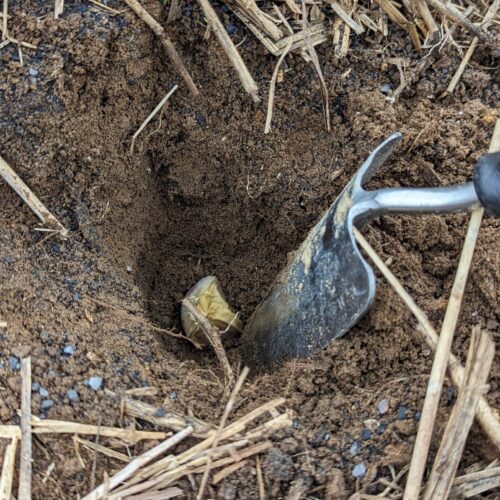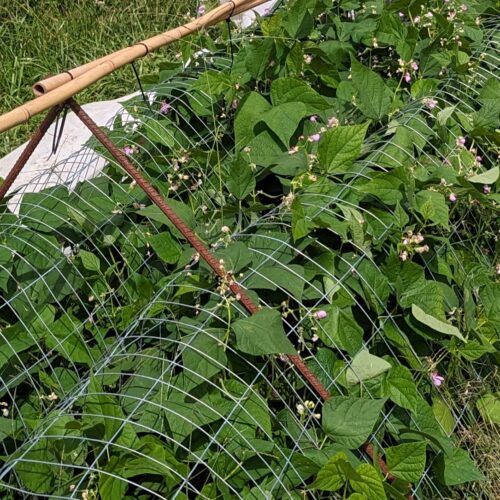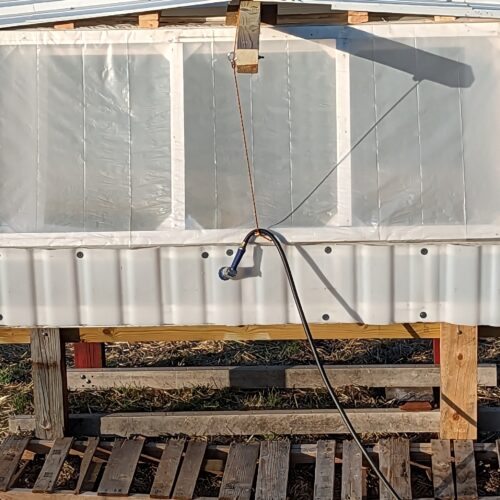Days are getting shorter and cooler. Far from being the end of the growing season, fall is one of the best times to plant!
There are several reasons for this: the heat of summer has by and large gone; fall brings wetter weather and nights are cooler. These factors favor both root development and greater transplant success. Roots will grow throughout the fall as long as ground temperatures remain above freezing.
What to plant in the garden
Here are some great fall planting ideas for the garden:
- Garlic
- Onions
- Leek
- Carrots
- Radishes
- Beets
- Peas
- Greens including
- Kale
- Arugula
- Endive
- Lettuce
- Sprouting broccoli
- Swiss chard
- Mustard greens
- Brussels sprouts
- Cabbage
Planting garlic, onions and leeks
Prepare the soil with compost and for bulb sets, incorporate bone meal. Plant 2-3 times their bulb diameter deep. Water in well, and mulch with straw, rotted if you have it.





Planting carrots, radishes and beets
Mix carrot and radish seed, and beet and radish seed together. Radishes germinate quickly, whereas carrots and beets are slower to germinate. Harvesting radishes will help to thin the carrot or beet crop. Root vegetables prefer soils rich in organic matter and bone meal, a source of phosphorous. Make these additions at planting time.
Peas do best in cool weather. Sow peas at least 60 days before the first average frost date in your area. This year, we are growing bush beans (Anellino di Trento) as a fall crop. To encourage a good crop, we cover the planting in 6 mil clear sheathing at night. Temperatures here in the Blue Ridge Mountains of North Carolina are getting into the 50s. On warm days (80s) the sheathing comes off to allow pollinators access to the flowers. To prep the bed, I incorporated a granular limestone and mulched with straw between the rows. Legumes form symbiotic relationships with rhizobia, bacteria that fix atmospheric nitrogen. They have a built-in fertilizer source, so don’t worry too much about fertilizing the crop. What you do need to pay attention to is watering. Under plastic, temps run higher, which expedites plant growth, but omits natural rainfall. Check on your plants at least once a week, pull back the plastic and give them a thorough soaking.

We are growing greens in an outdoor hydroponic unit. There are a number of advantages to growing greens hydroponically, including no need for weeing or rinsing off soil! This fall, we are growing arugula, kale, endive, mesclun, and basil. The hydro unit consists of foam board with 2” hole cut-outs for net cups. The net cups are filled with a fired clay (Hydroton®). An aerator with several air stones keeps the water well oxygenated. Add 5 mls /gal of a soluble NPK fertilizer plus 5 mls /gal of CALiMAGic®, a source of nitrogen, calcium and magnesium.


Season extending ideas
- Grow under cover
- Grow indoor under lights
Growing under cover
A hoophouse has several advantages to the gardening including:
- Extends the growing season
- Helps to control diseases by keeping foliage dry
- Protects crops from cold winter weather
- Regulate growing temperatures
- Can enter the structure
- Economical to build
- Simple to construct
Considerations in the construction of a hoophouse:
- Your budget
- What you plan to grow
The simplest construction of a hoophouse is based on cattle fencing. Cattle fence are 48 to 50” in height. They come in various lengths, the most common being 8’ and 16’. The height of the hoophouse ought to be based on two considerations: your own height, and the height and width of the crop or crops you plan to grow.
The advantage of a hoophouse is that you can enter it to work. If you are growing vegetable crops, consider the eight-foot panel. This will give you a working width of 5’ and a length in multiples of 4’. If you decide to build a 12’ hoophouse, you will need 3 cattle panels. An 8’ panel makes a 2.5’ radial arch. To build to a 6’ height, you will need to construct cheek walls that are 3.5’ high. The cheek walls can be made of various materials, but I use pressure treated lumber for ground contact, and non-treated for above ground construction. Vent the hoop house by installing entry and exit doors.

If you elect to grow larger crops (such as figs, which I am currently growing), consider 16’ cattle panels. These will allow a building width of 10’ and an arc of 5’. In this latter case, all you need is 12 or 24” high cheek walls. Install foam pipe insulation on the leading edges of the cattle panel to reduce the possibility of tearing the 6-mil plastic sheathing. In our construction, we opted for one entry door, and low side vents for temperature control.


Growing Indoors Under Lights
Growing indoors has the added advantage of extending harvest throughout the winter months. It is pretty straightforward to construct a grow unit, or you can model one on wire shelving that you purchase. Visit your hydroponic store for broad spectrum grow lights. They offer LEDs designed to grow both veg and flowering crops.

Join us next week for a different fall subject before we get back to crops.
~ Signing off for now, Joe

